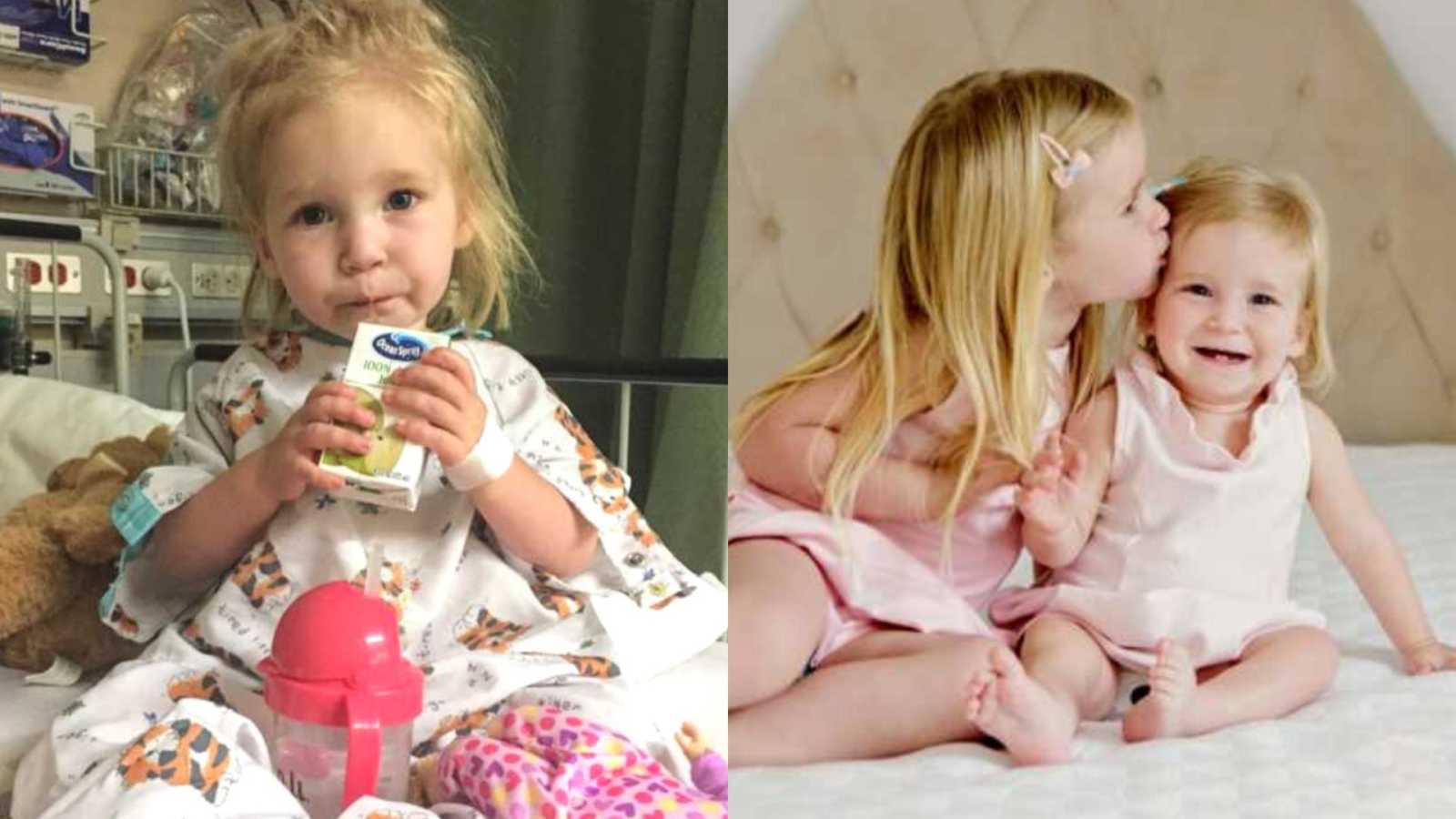The Life-Changing Call
“The phone rang as I was about to run out the door. I grabbed a notepad, a pen, and took a deep breath. How do you prepare yourself to answer a call with the results of whether your 18-month-old daughter is going to die? I didn’t know how to do that. My mind shut off, my heart hammering, I answered the phone.

‘Mrs. McGlocklin? Is this a good time to talk?’ With those words, I knew it was something awful. I felt sick and disoriented. My mind clicked off. I heard my voice speaking and it sounded calm asking questions. I could see my bedroom dresser, the medical papers and kids school artwork stacked in a pile, and I wrote down the doctor’s words without processing them:
‘Very serious, no cure yet, not sure, lots of research…’
I could hear my daughters laughing and playing in the next room. My oldest, Emily, who loves her sister fiercely, and then, Marian, who was giggling while I was learning she wouldn’t be growing up at all.
Marian’s Diagnosis
At only 18 months old, Marian was diagnosed with the fatal metabolic condition Niemann Pick Type C, sometimes nicknamed Childhood Alzheimer’s. It also shares symptoms of Parkinson’s, ALS, and other horrific degenerative diseases.
But the distinction here is while it can strike adults of any age, it often appears and begins to destroy near the beginning of life, in children.
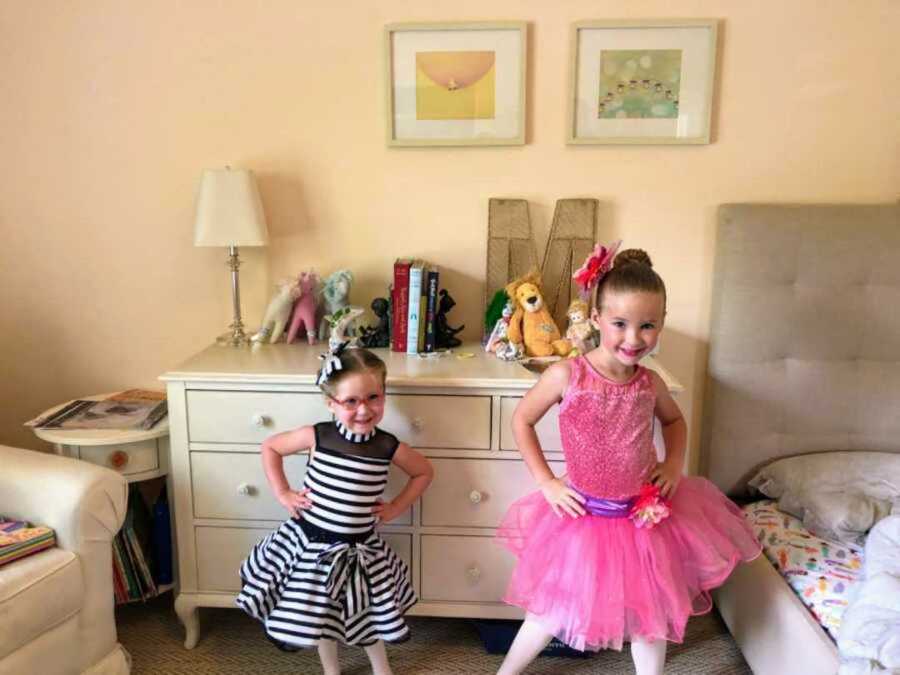
All rare diseases are a gut punch, but Niemann Pick Type C, and its related lysosomal storage disorders, are a particular breed of cruel. NPC children are often born seemingly perfectly healthy and develop normally for variable periods of time, and then something changes.
Small symptoms at first, sometimes becoming a little clumsy, showing some minor developmental delays, starting to struggle with tests in school, or getting a ‘big belly’ which is actually an enlarged spleen or liver.
And then it gets worse. The disease takes everything. I didn’t know diseases like this even existed, not to mention strike children, our child. Next, you often face tremors, seizures, cognitive decline, dementia, feeding tubes, choking, hearing loss, walkers to wheelchairs to bedridden, slurred speech and then losing the ability to speak at all, losing the ability to move your body at all, no more smiles, pneumonia, loneliness, dystonia.
Your limbs twist inwards, you get something called cataplexy, which is the immediate and involuntary loss of muscle strength during laughter. As one NPC mom says, ‘NPC steals joy from laughter.’

NPC is always fatal. For kids like Marian, with early neurological signs under age two, it’s often fatal by age five or six. There are no FDA approved treatments.
So this is what we heard when the doctor said Marian has Niemann Pick Type C. All of this. All the air left the room. I wanted to give up, to fast forward through her suffering. To try to skip it somehow.
Staying Positive
But Marian is bursting with love, she is kind, she is funny, and she fights for every single step forward. She’d already been fighting NPC her whole life, we just didn’t know it. And then, it was clear: Marian couldn’t be her own voice. She needed our help to fight, and that’s what we decided to do. To fight with everything we could.
Our first ray of hope was an early diagnosis thanks to an incredible pediatrician and team of specialists at Children’s Hospital Los Angeles, and one at Cedars Sinai. For Marian, her early signs were considered ‘nonspecific’ – low muscle tone, a gross motor delay, some weakness. She was having trouble gaining weight, and then got a ‘big belly’ – enlarged spleen.
Our initial hope had been something mild and not progressive. But she wouldn’t be outgrowing this, and unless she could get help, and fast, it would only be getting worse and worse and then taking her life.
So we dove in. NPC parents spent hours on the phone with us, explaining a promising experimental treatment: VTS-270, cyclodextrin, a sugar molecule found in Febreeze and fat-free salad dressings. This little miracle wasn’t a cure, but it was working to slow – or even in cases with early diagnosis – seemingly stop the majority of the disease progression.
Treating Childhood Alzheimer’s
But it wasn’t an easy road. It had to be given intrathecally, as an injection into the spinal fluid, for it to travel into the brain and fight back against the neurological destruction. Given Marian’s age, she would have to be sedated under anesthesia to safely receive it.
Every two weeks. Indefinitely. We felt so lucky, and also completely terrified.
There was a clinical trial for this drug, but you had to be four years old, and Marian was only one. This meant our only hope was accessing the drug through compassionate use. At the time, no patient in the world as young as Marian had been treated. I worried we would be told no.
We kept hearing the name Dr. Kravis at Rush University in Chicago. To our tremendous relief, she could see Marian quickly, but we would have to fly to Chicago every other week, out of pocket, until Children’s Hospital Los Angeles could get approval to start.
I said yes, absolutely, without having any idea of how we could actually pull that off. Just that we would do whatever it took. Every single day felt like a day moving Marian further into the mouth of the monster, this irreversible and destructive disease.
NPC entering our lives is one of the most devastating and brutal things to ever happen, but it’s also brought forward some of the most beautiful kindnesses as well. We emailed our family and friends and asked for any type of support. What we received back was amazing.
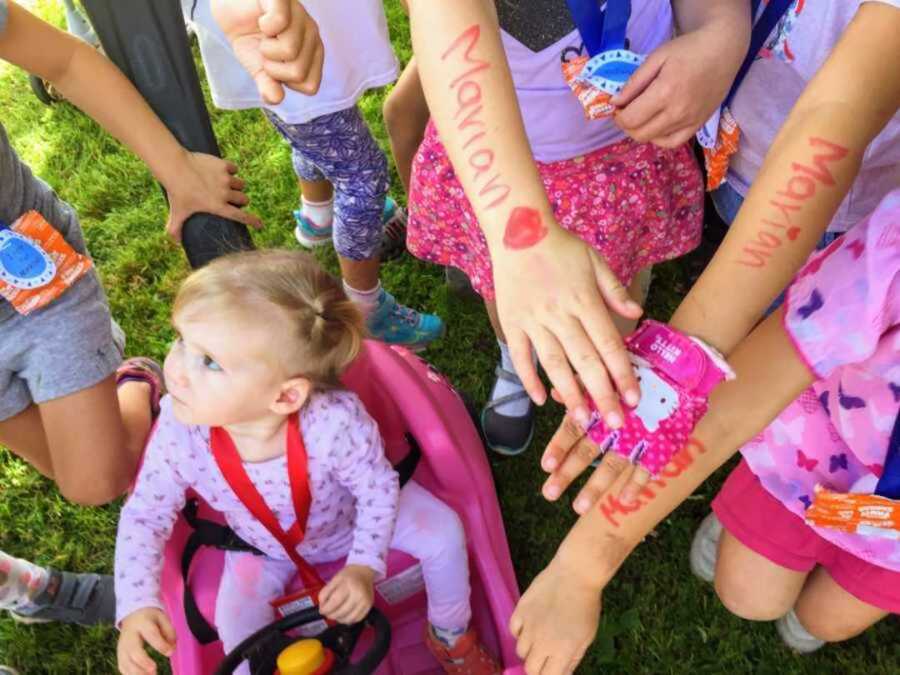
Friends, family, and beyond dropped everything to help. Emily and Marian’s preschool had a bike-a-thon raising four thousand dollars alone. An amazing nurse, Sean Griffith, who we have never met, bicycled across Florida to raise NPC awareness for Marian. A team of people at Do/Love/Live donated hundreds of hours and talent to help people learn about Marian.
We did a news story that went all over the country and spun into other coverage and opportunities that went throughout the world. Where we had a need, big or small, a kind person was graciously there. If you had asked me beforehand, I’d say things like this happen to other people, people with more friends, bigger networks, that it would never happen to us. But it did.
Something that at first took away all my hope, ended up, in a different way, giving us back endless hope and gratitude for our community and others. Our family, friends, and strangers, who became like family, stood by our sides, and helped us to stand.
When we arrived at the Residence Inn River North in Chicago to stay for Marian’s evaluations and first treatment, we were all nerves and adrenaline.
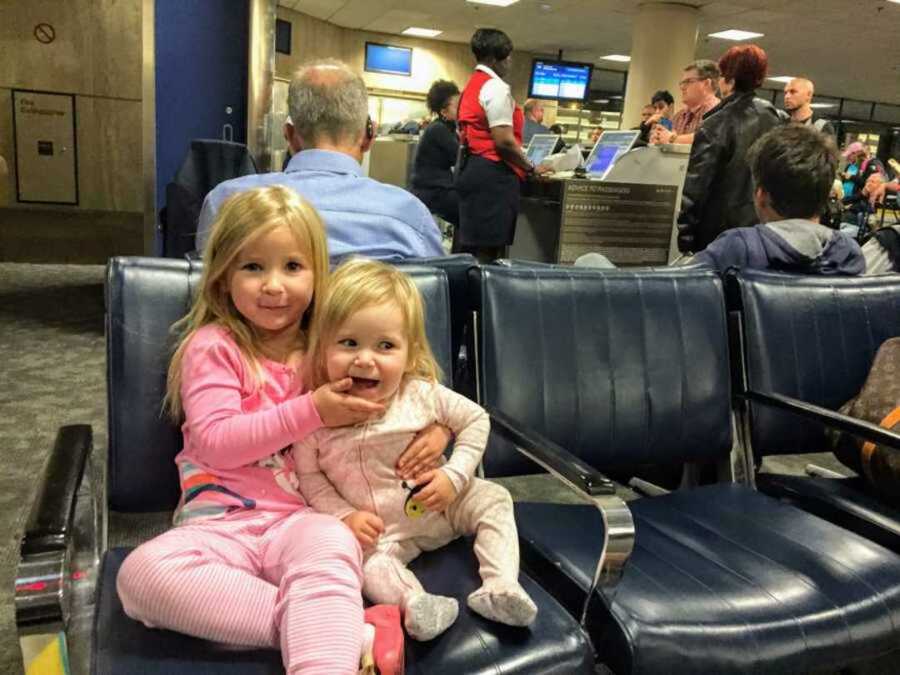
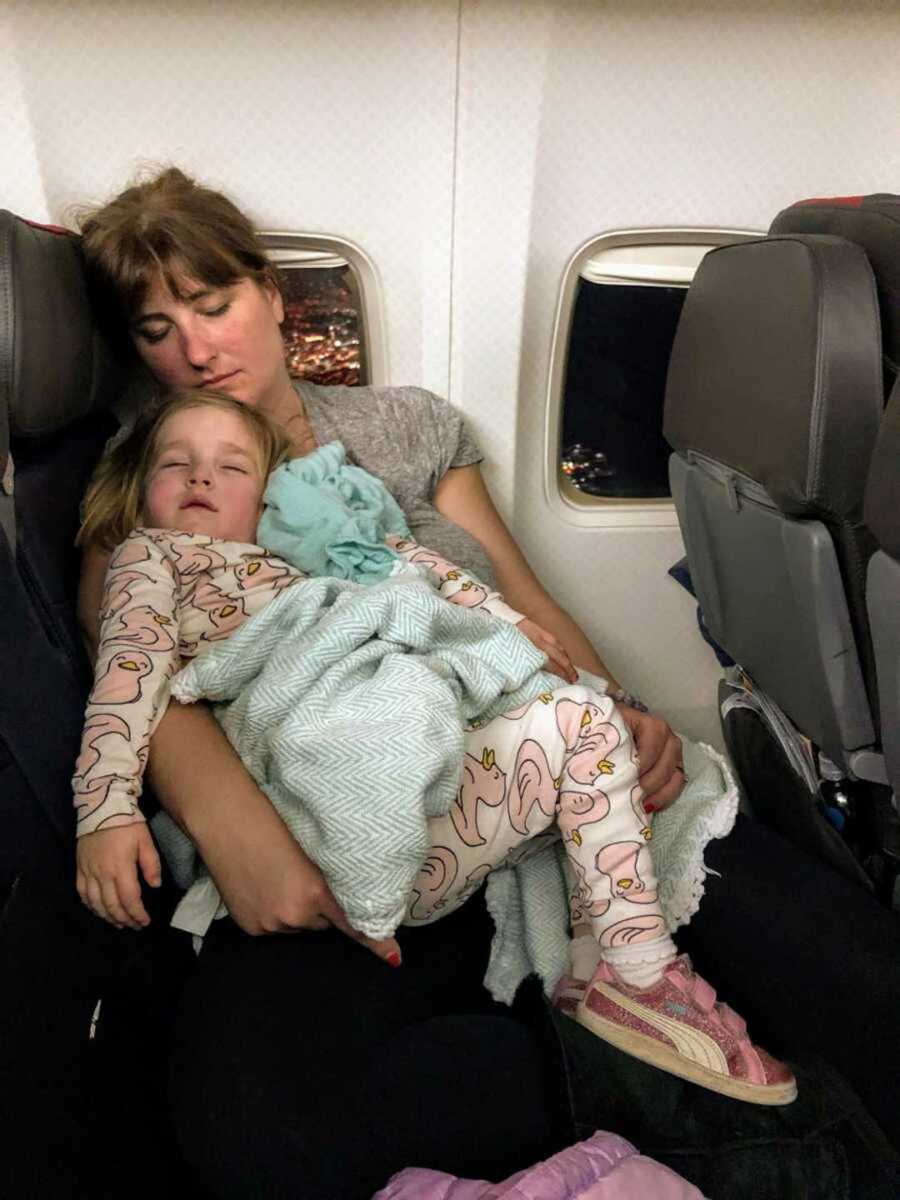
The day after we arrived, we went for a walk around the block. I felt like we were hiding in plain sight, that no one knew the incredible pain we were in. When we got back to our room, we opened the door and it was suddenly magical.
The hotel set up a children’s tent, Disney store toys filled the room to the brim, stuffed animals, princess dress up, blankets, games, coloring books and comfort items. The hotel left a note reading in part, ‘We are not just the people serving you in this hotel. We are all mothers, fathers, sisters, brothers, aunts, uncles and grandparents. And now you are part of our family.’
Suddenly, we felt safe, we felt at home.
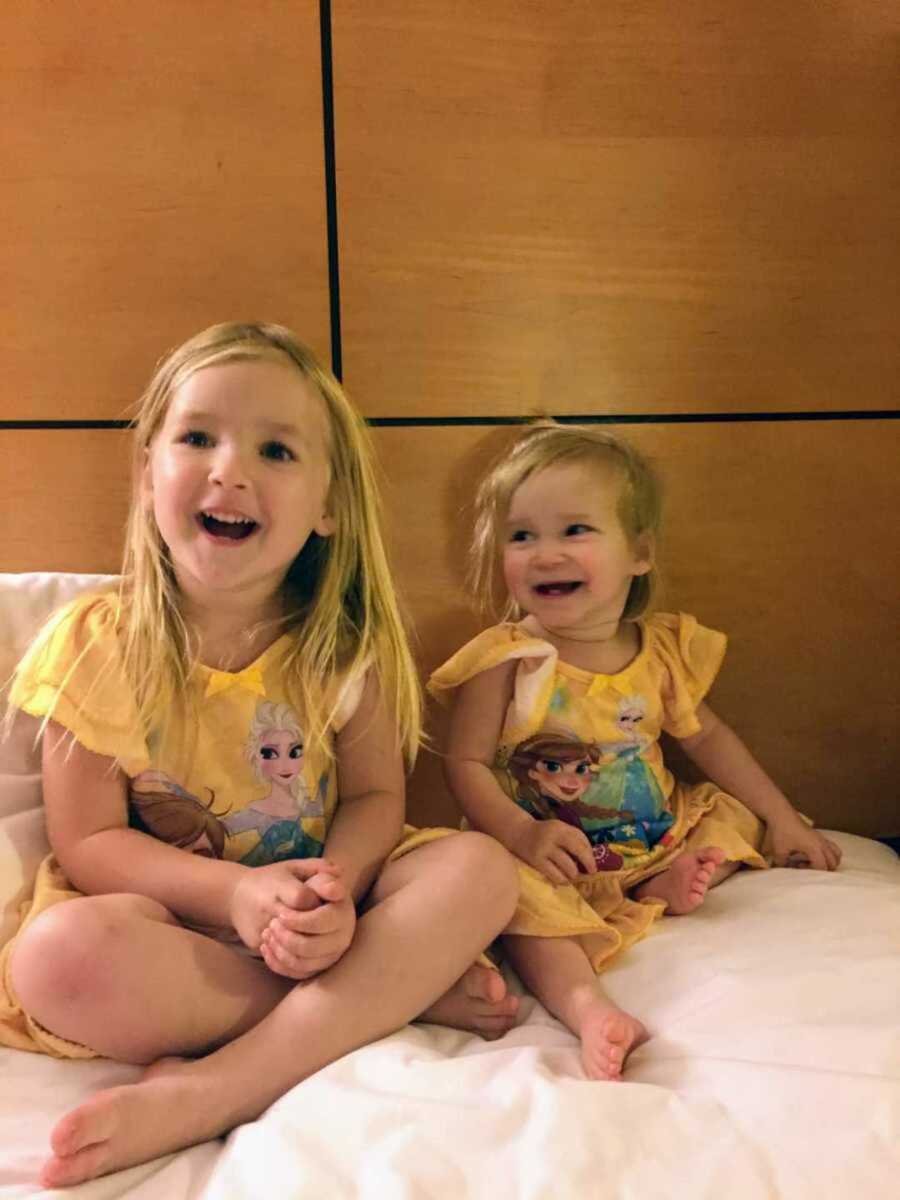
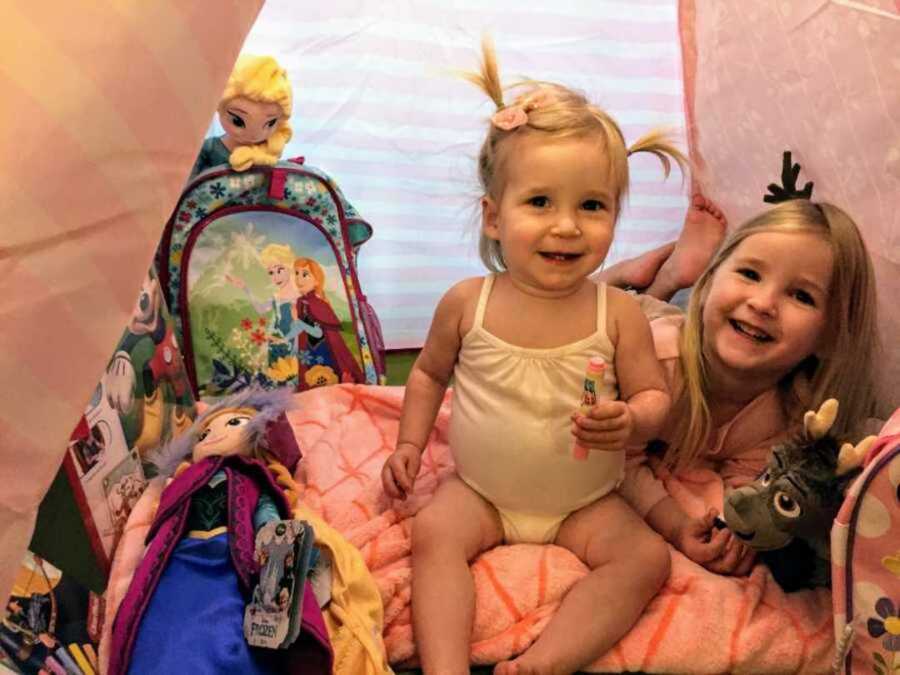
How can anything be kinder than these kindnesses? When we couldn’t put one foot in front of another, other people gave us the air and motion to do so. Surrounding Emily and Marian with love and joy.
We started flying back and forth to Chicago, simultaneously trying to raise awareness about this horrible disease no one has ever heard of, trying to save Marian’s life.
We didn’t know if the treatment would work, or how well it would work or for how long.
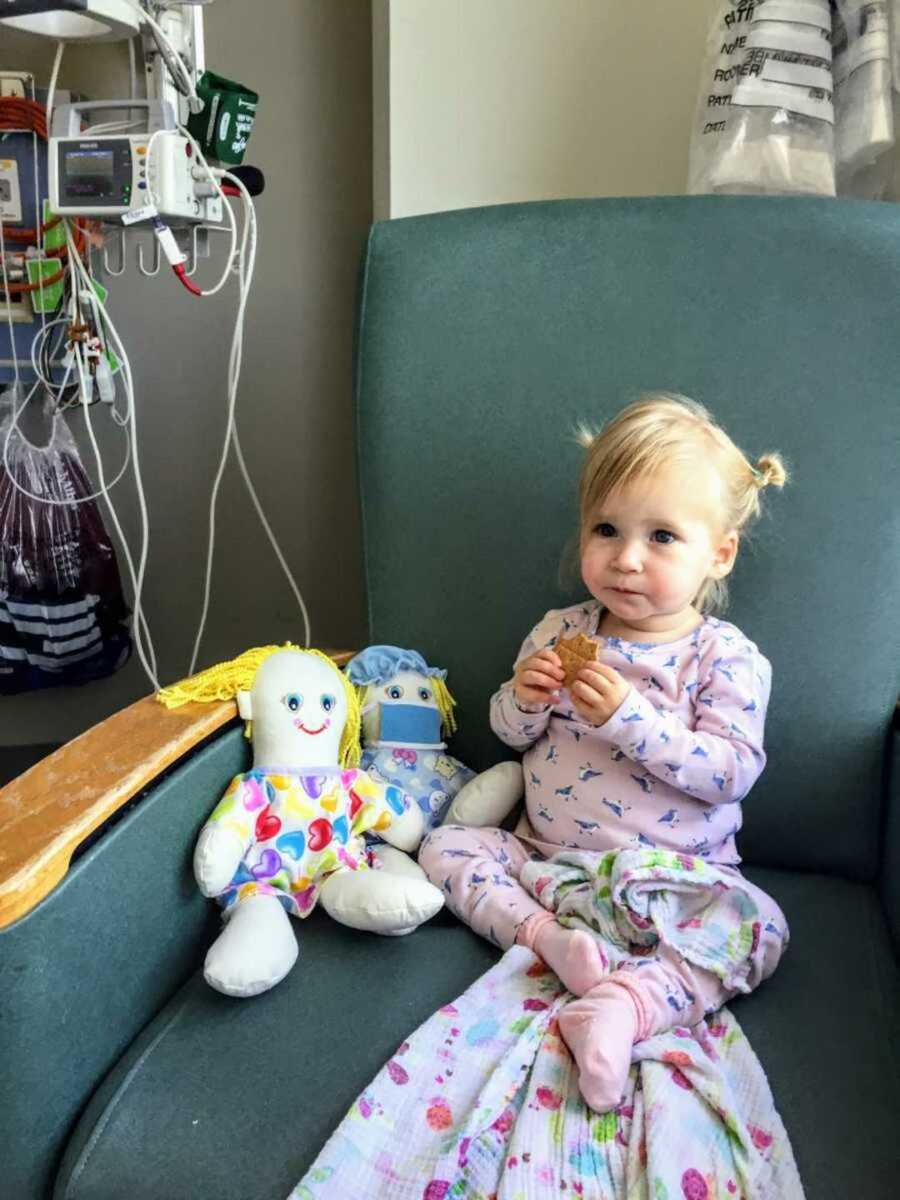
After five trips we were wonderfully able to begin Marian’s treatments at Children’s Hospital Los Angeles, where she continues going today, every other Friday, over two years later.

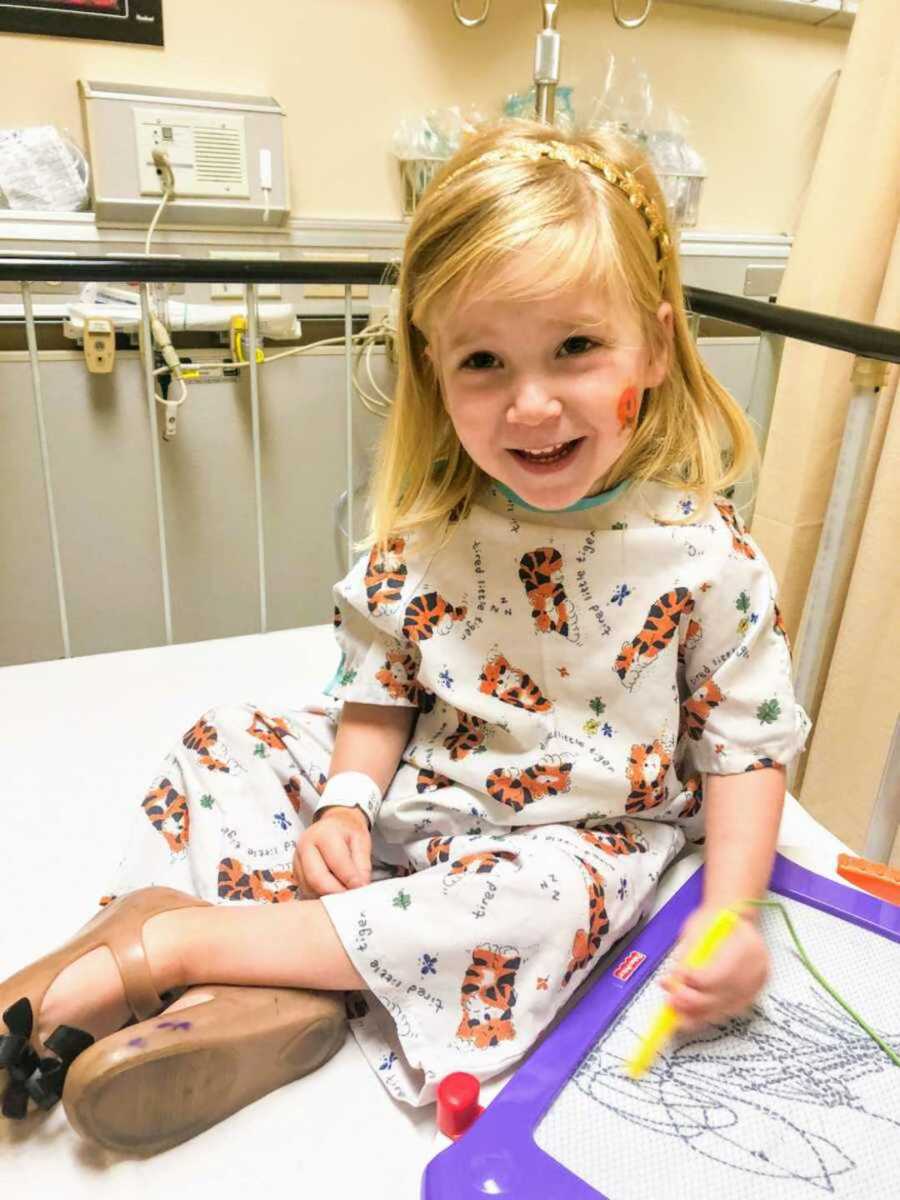
Healing Journey
After five treatments, Marian began walking. Then her energy increased. She slowly started talking more, playing more instead of being too tired and watching with a smile. Laughing more. Completely, totally, and endlessly obsessed with all things her big sister. Things we hadn’t even noticed were missing, suddenly were there.
In the two years since, we’ve seen some minor disease signs and she continues with some developmental delays that can be a challenge.
The disease has changed everything. I left my job to stay home full time, we started a 501c3 nonprofit Hope For Marian, we travel across the country for doctors and to support drug development efforts and research for NPC.
Marian has six therapeutic intervention services a week for speech, occupational and physical therapy, on top of preschool and hospital visits every other week. Plus a slew of doctors. It can get exhausting. She can walk long distances now, but does get tired and still has some weakness.
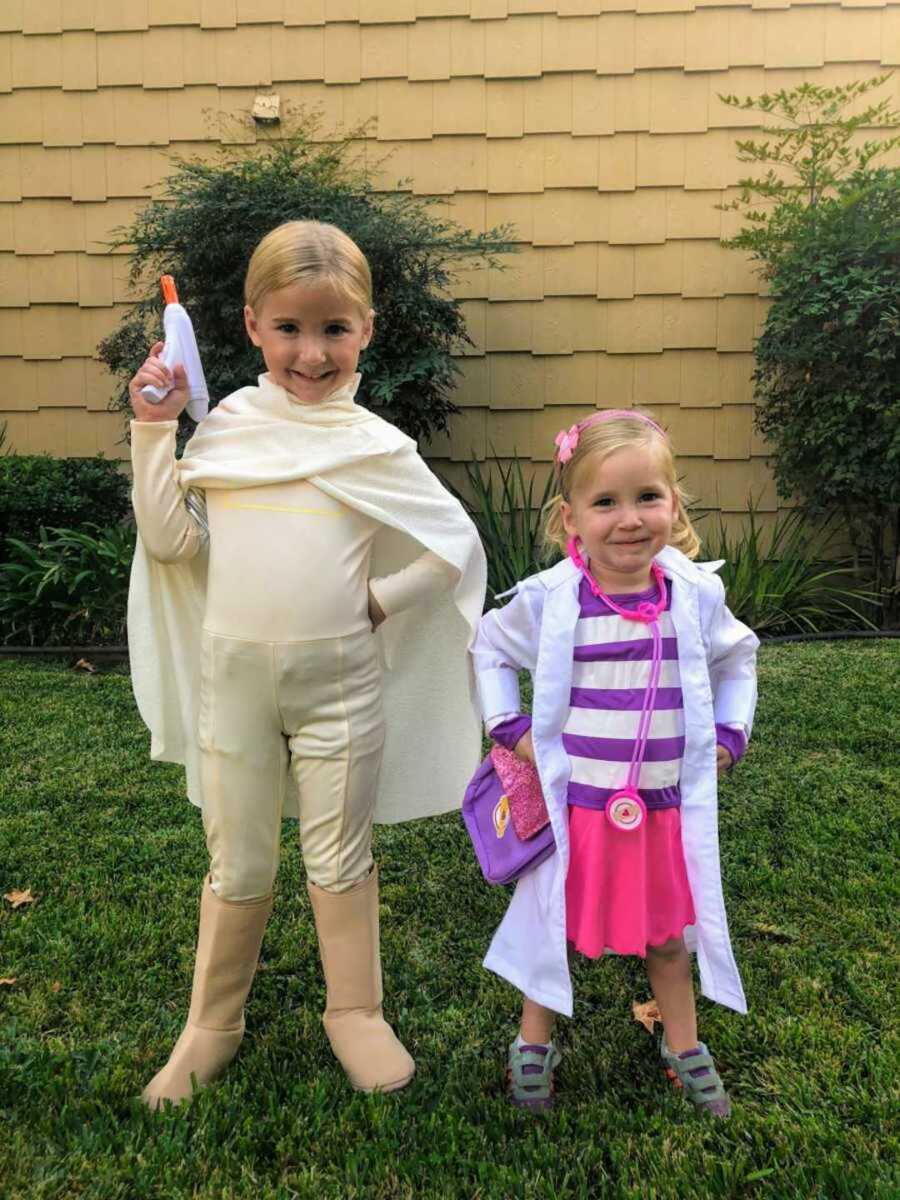

Recently, we were at the beach and Marian kept losing her footing trying to climb a small hill. She turned and sadly said, ‘I don’t want to.’ And then her incredible big sister, at six years old, silently walked down, took both her hands, lifted her up, and pulled her up with a quiet support and steadfast determination.
They made it up together. At the top, Marian threw her arms up and shouted with a huge smile, ‘I did it! Yay!’ while her sister danced around her.
This is how I feel. We made the steps but it is other people who carried us. Kindness matters. Small or large. It matters. It gives you a breath when you can’t find any air. It makes a difference, for us a life-altering one.
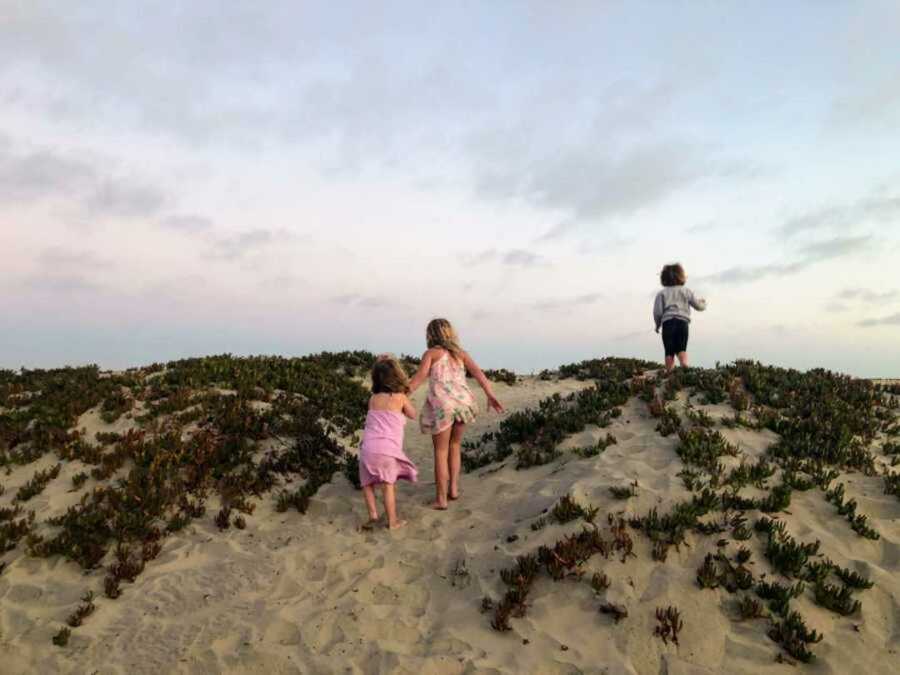
Living Life Beyond Chronic Illness
We still don’t know what is going to happen, what her life will be like, how long she can live, but we do know we’ve absolutely altered the course of the disease for Marian. At first she had no chance, now she does, and it’s not a half bad one.
We’ve seen major gains in every single area – you would never know what she is up against by looking at her happy face, as she saunters over to you with her pink glasses and big grin, telling you about her upcoming ballet birthday party where she’ll be turning four years old.
She’d probably invite you, and then tell you we can’t make the birthday cake yet because it’s too early. ‘Not yet,’ she says shaking her finger. ‘Not yet.’
That she is doing any of this is amazing; it defies the disease. It is the hope I didn’t think was there anymore. The cure for NPC will come. The question is just, will it come in time? This is our fight. This is our life. This is our hope.”
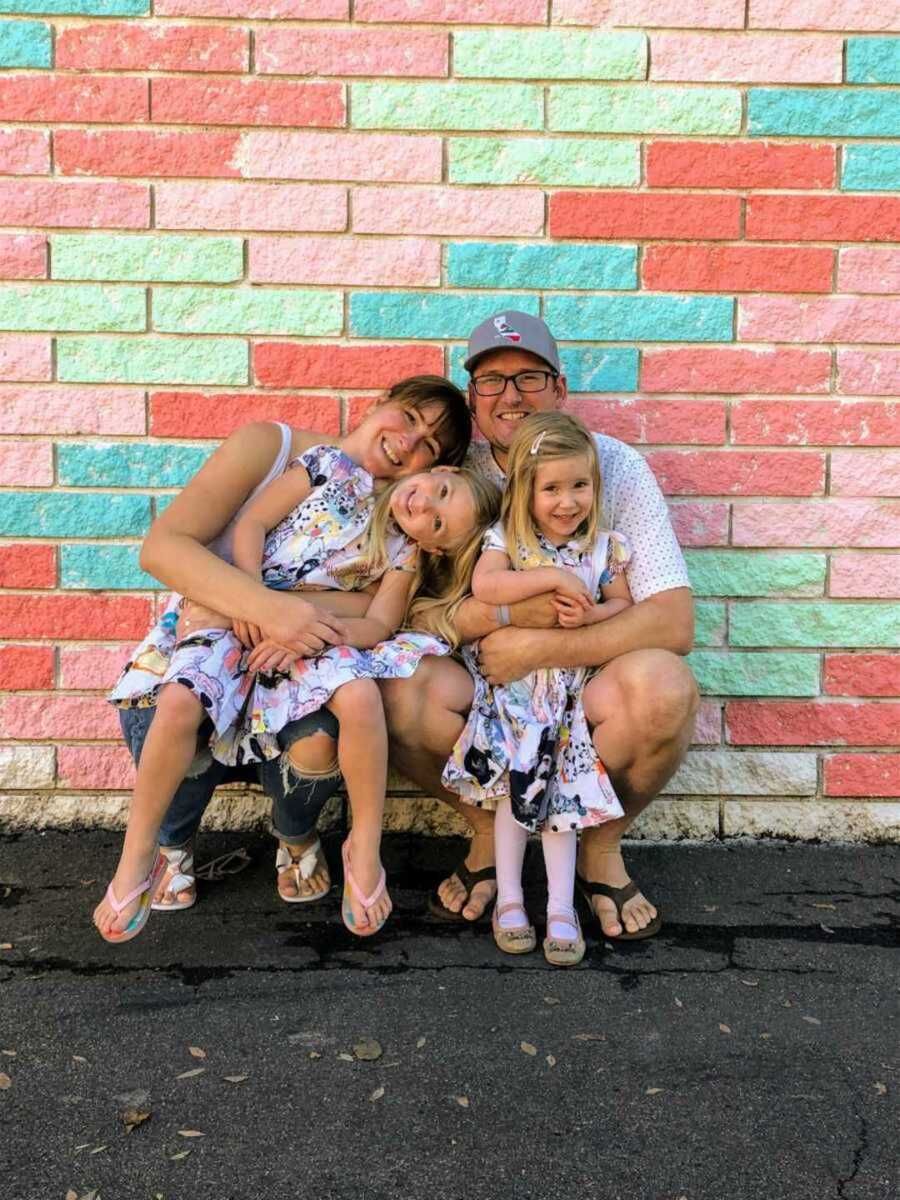
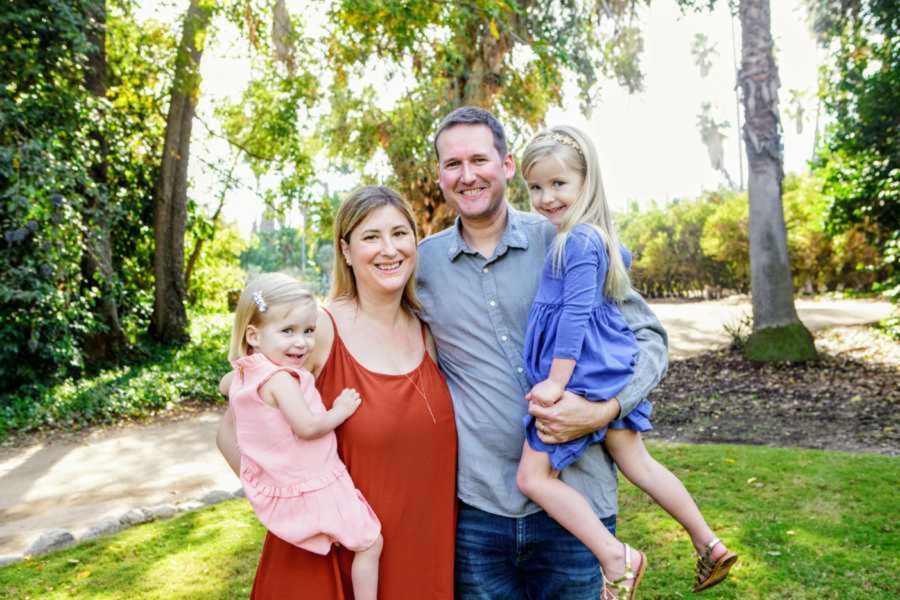
This story was submitted to Love What Matters by Sara McGlocklin. You can follow her journey on Facebook and Instagram. Join the Love What Matters family and subscribe to our newsletter.
Read more stories like this:
Provide hope for someone struggling. Share this story on Facebook to let others know a community of support is available.

